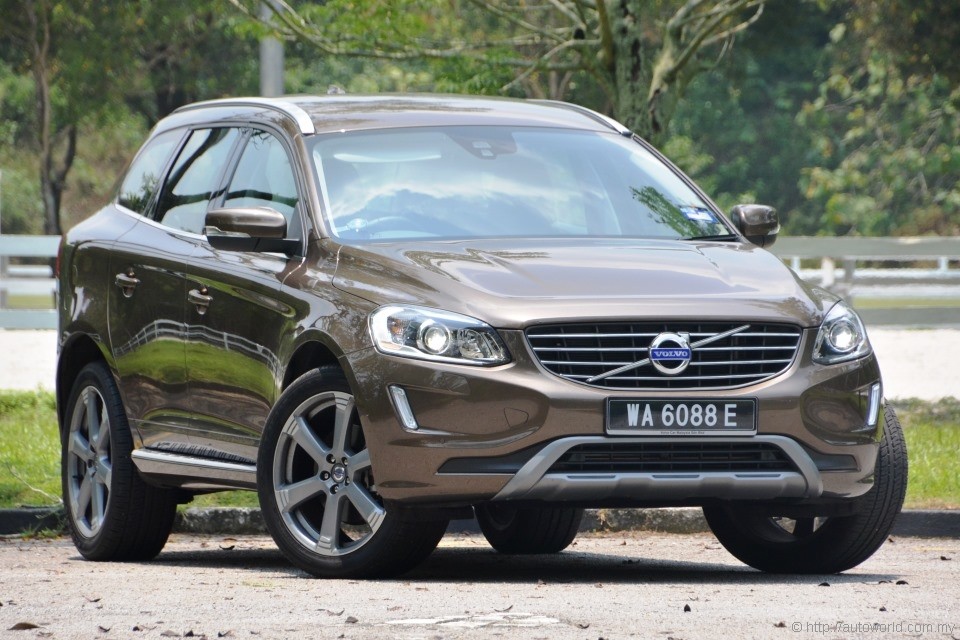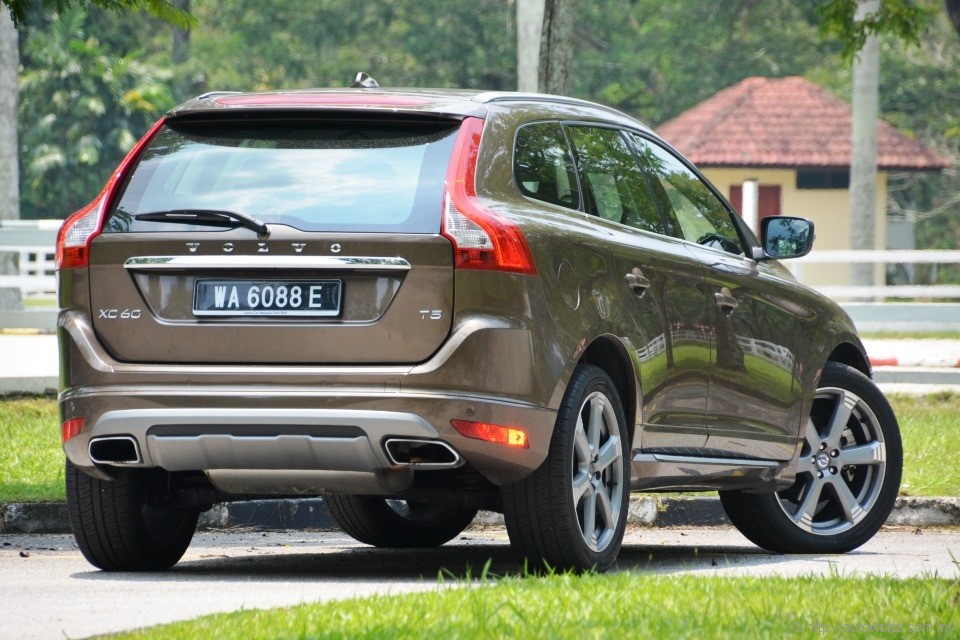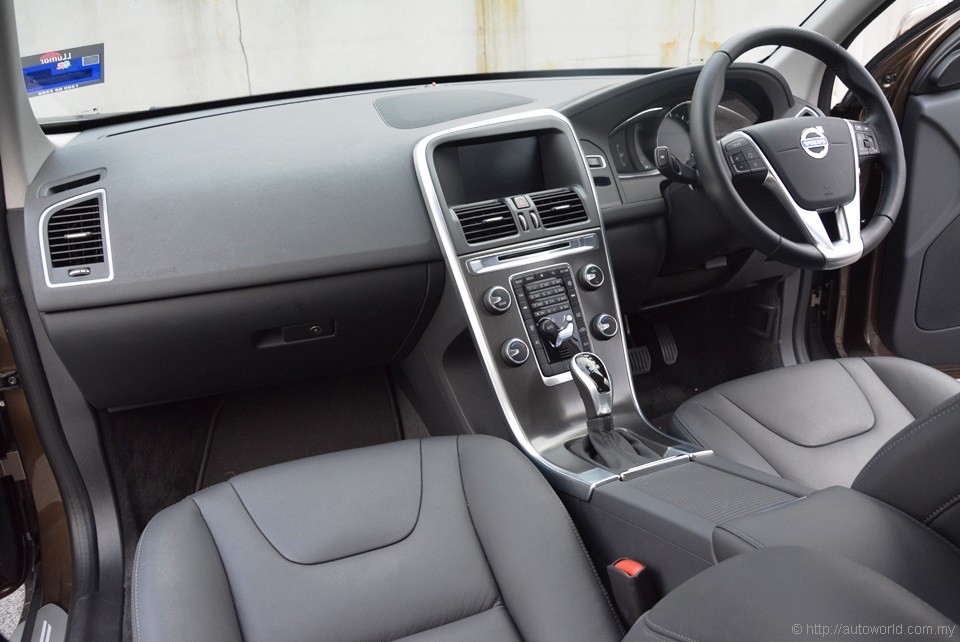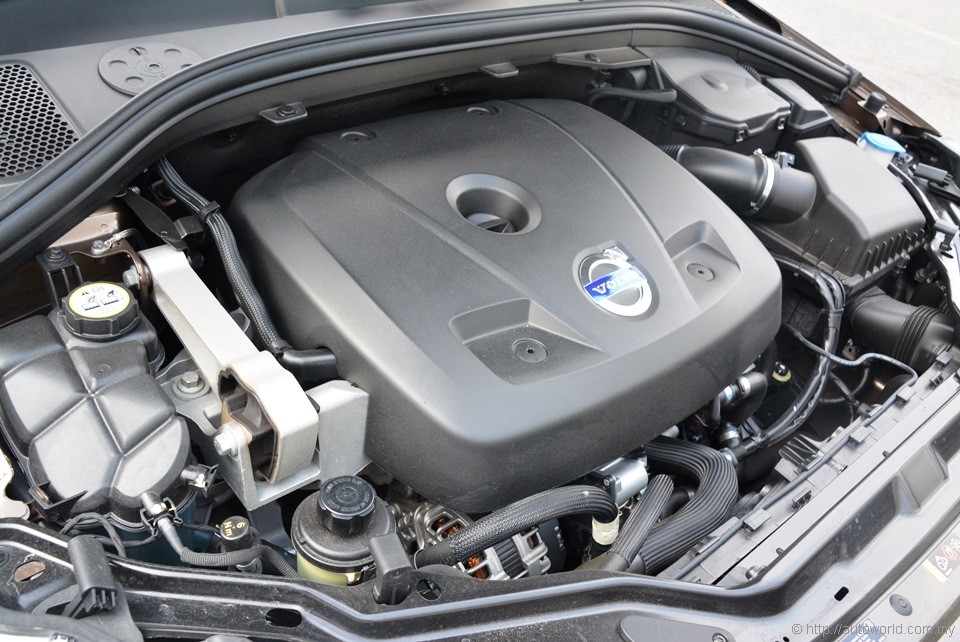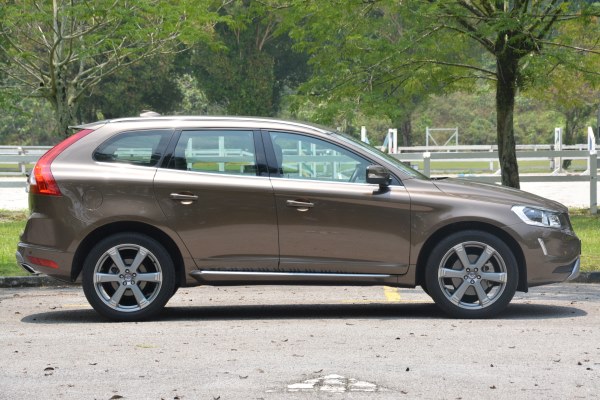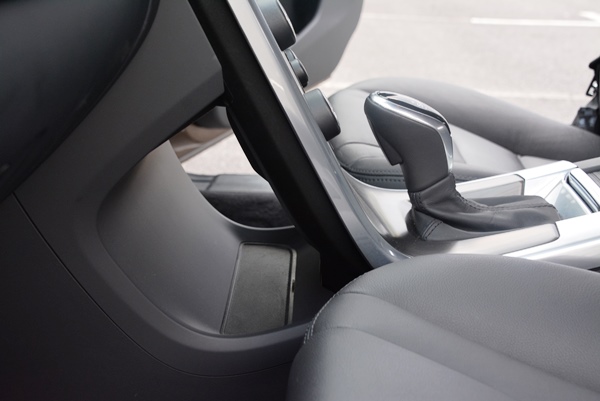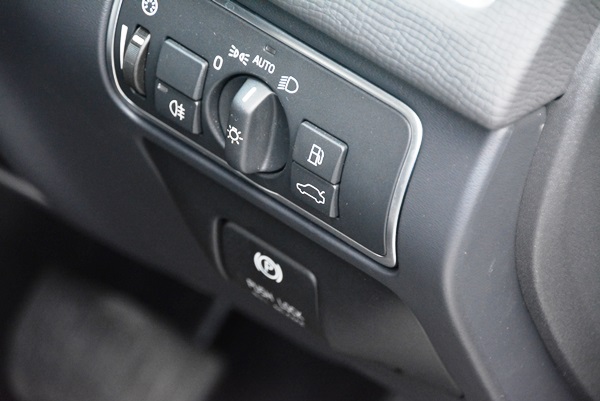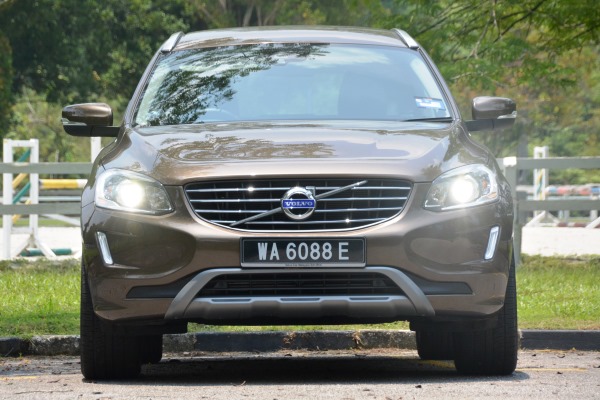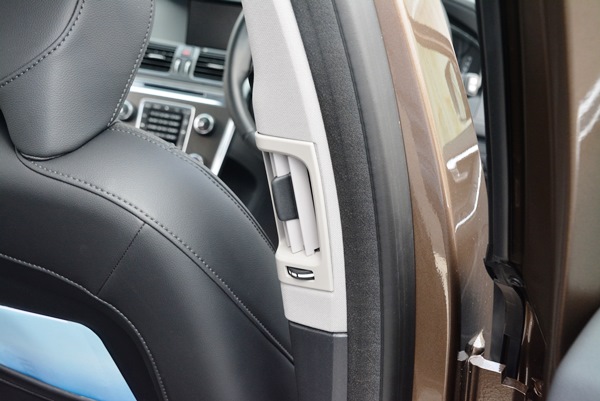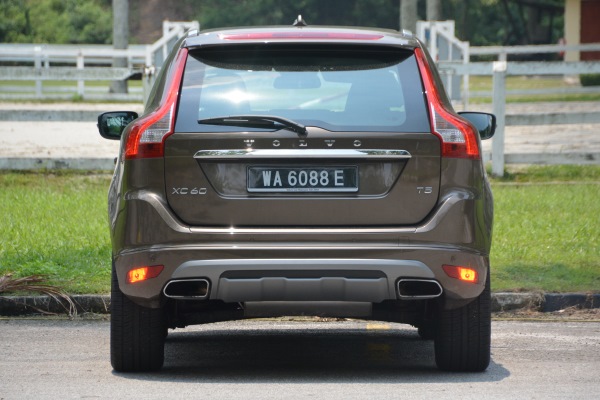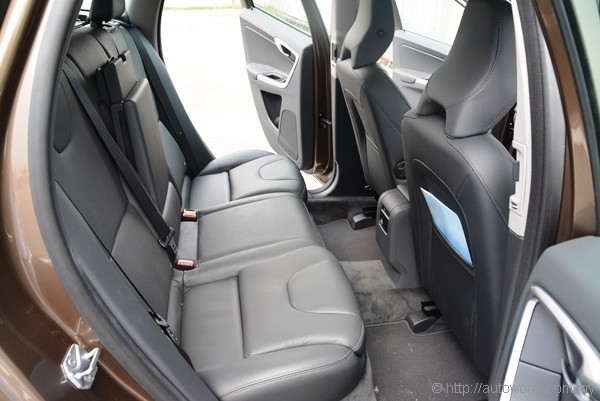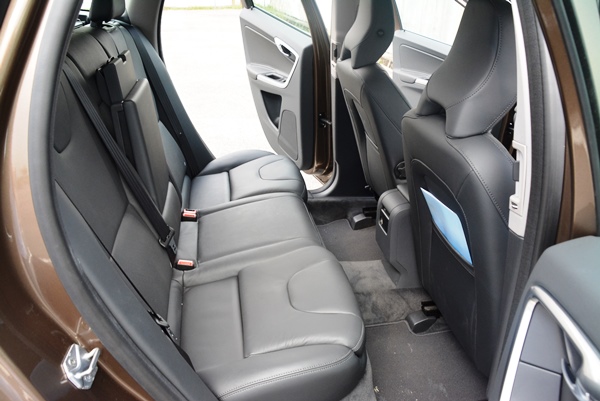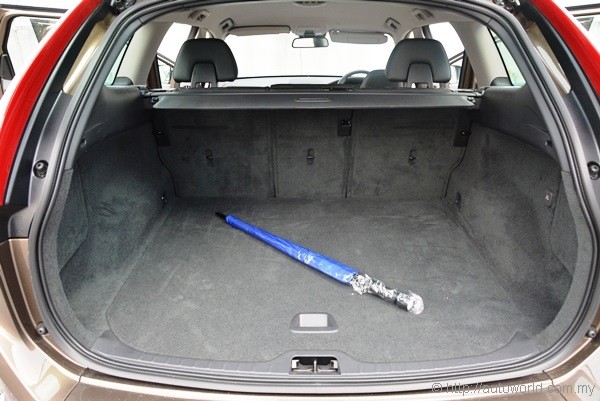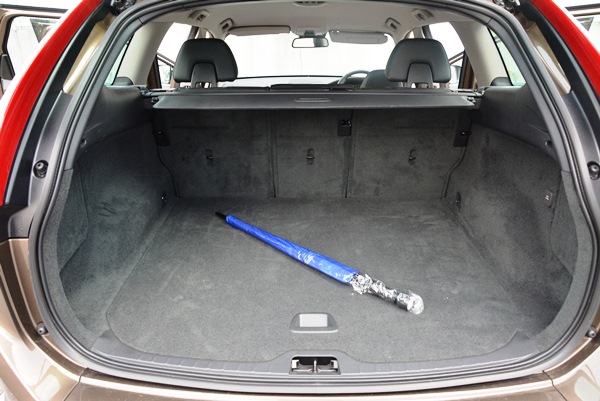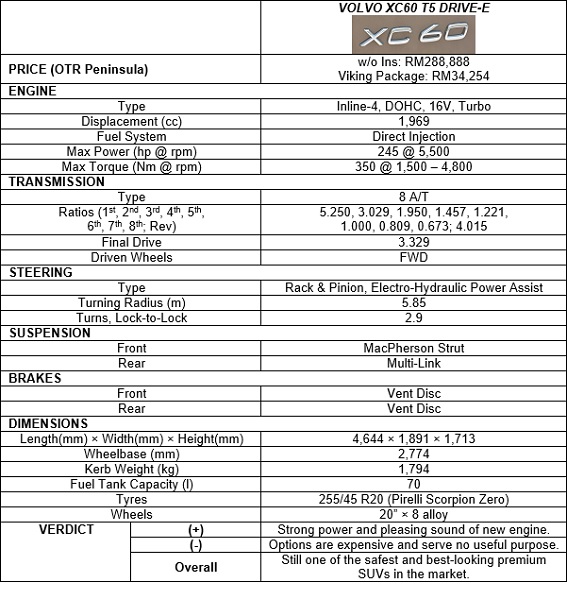Volvo XC60 T5 Drive-E Test Drive Review
Corporate takeovers are regular occurrences in the business world. The car industry is no exception to this rule, although it often takes a lengthy process to fully transition from practices implemented from the previous owners to what the new owners seek to apply. This is especially true with regards to engineering, where designs are invariably shared with the previous owners.
The sale of Volvo Cars by Ford to Geely, for example, was concluded in 2010, but today, four years on, many of Volvo’s models continue to feature engines and platforms of the Blue Oval. The V40, for example, is based on the Focus, whilst the 60-series models (S60, V60, and XC60) and S80 all share the EUCD platform with the Mondeo and S-Max.
 |
The recently-unveiled second-generation XC90 is underpinned by an all-new modular platform that will help the Swedish brand fully shed its Ford connections. Alongside the new platforms is a range of new in-house developed engine family that is slated to eventually span the brand’s entire range of models. Volvo’s current powertrain line-up are a mixture of ageing in-house engines with newer mills from the Ford EcoBoost family – the new range of Drive-E engines will serve to finally replace both.
The Drive-E engine family was first unveiled to the European market in late 2013. Here in Malaysia, the first member of that family arrives to power the midlife facelift of the hugely successful XC60 premium mid-sized SUV.
 |
| Volvo’s signature floating centre console with storage space behind. |
Prices & Variants
As tested, the XC60 in T5 guise here hits the road at RM288,888 before insurance, which we estimate at RM7,800 without the benefit of NCD. At the moment, this is the only variant of the XC60 on offer, but getting your car to look exactly like ‘WA 6088 E’ pictured here requires checking all boxes in the options list – a process that sets you back a further RM34,254.
The range of optional accessories on offer serve mostly aesthetic needs and are difficult to recommend on any grounds other than mere vanity. We advocate extreme caution before choosing the 20-inch alloy wheel options along with their matching 255/45 Pirelli tyres; these being a full three-inch upsizing of the standard rollers, there are considerable and continuous penalties to pay in performance, fuel consumption, and ride quality.
With regards to functional equipment, the XC60 is, as usual for Volvo, very healthily stocked for safety. It does not incorporate the full suite of gear available in the global catalogue, but there is still electronic stability control, autonomous emergency braking, blind spot warning (now radar-based), and roll stability control to count on. The rear seats feature a pair of integrated two-stage child safety seats. We do need to highlight, however, that auto tailgate closing and reverse camera, features available in the previous T5, the latter a cost option, are both deleted altogether in this model.
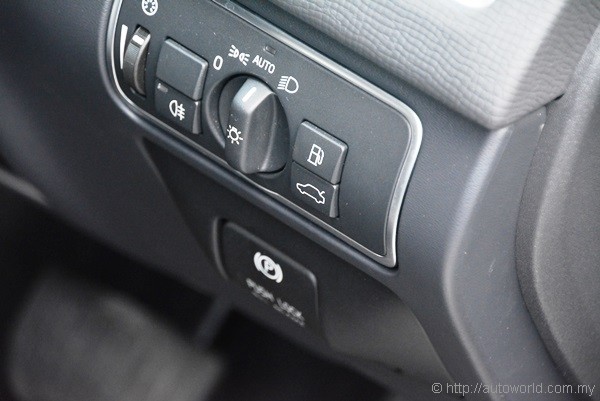 |
| Volvo’s electronic parking brake is cumbersome to use. |
Specifications
With outputs ranging from 120hp all the way up to 400hp, Volvo’s new Drive-E engine family has very large shoes to fill. All versions of the Drive-E engine, be it petrol or diesel, sport identical displacements of 1,969cc, making it a question of simply varying boost levels to deliver different power ratings.
The T5 badge denotes outputs of 245hp and 350Nm; coming from the previous Ford engine, this is an increase of 5hp and 30Nm. Featuring a single turbocharger and direct injection, the engine is mated with an Aisin-sourced 8-speed torque converter automatic that steps in to replace the Getrag 6-speed PowerShift dual clutch ‘box that was packaged with the Ford EcoBoost powertrain.
Like the preceding T5 model, the current Drive-E iteration also exclusively powers its front wheels. Worldwide, for the XC60, Volvo curiously does not offer the option of all-wheel drive with the Drive-E engine. An even more powerful version of the Drive-E engine, this one boosted by twincharging, is slated to arrive at a later date. With 306hp and 400Nm on tap, it is an absurdly powerful engine for a front-wheel drive vehicle.
 |
| New fascia is the clearest visual distinction between the current and pre-facelift XC60. |
Exterior
We’ve always seen the XC60 as a positively fine looker and this new one gives us no reason to alter that disposition. Its rear three-quarter sheet metal are left relatively untouched, but up front, the fascia has been revised with the main grille now enlarged to assume more visual prominence. The faux air inlets at the corners of the previous model have been wiped off, the space now occupied by a strip of LEDs to serve as daytime running lights.
We are typically skeptical of paying for accessories purely for appearance, although that being said, seeing the XC60 in its plain unoptioned state, it is clear that the skid plates, side steps, and body moulding lift the vehicle’s appearance considerably. The rims are a tricky decision, however; compared to the standard 17-inch rollers, the optional 20-inch alloys fill the big wheel arches a lot more convincingly whilst also lending a more purposeful stance to the vehicle. For practical reasons, however, we are still inclined to avoid this option.
 |
| 20-inch rims made for a really harsh ride. |
Interior
The XC60’s cabin retains much of the pre-facelift model’s basic architecture, although a few details have been suitably tweaked and updated as you would expect. A new darker colour scheme has been specified and the signature floating centre console is now trimmed with a more modern looking brushed metal finish. As before, the interior scores highly for the perceived quality of its material selection and build.
Egonomics could use further improvement however. Although basic controls are all placed within easy reach of the river, the crowded layout of buttons on the floating centre console can be confusing to operate on the move. The electronic parking switch also draws our ire for being unintuitive to use – push to engage, pull to disengage – and also slow to respond.
A new set of instruments reside in the dashboard. The previous two circular dial design makes way for a centrally-mounted speedometer flanked by an Eco meter on one side and tachometer on the other. On our test car, however, is the optionally-enhanced adaptive digital display that can alter between three display modes. Visually, it’s a considerable enhancement over the regular instruments; as far as frivolous RM3,216 options go, few are as tempting.
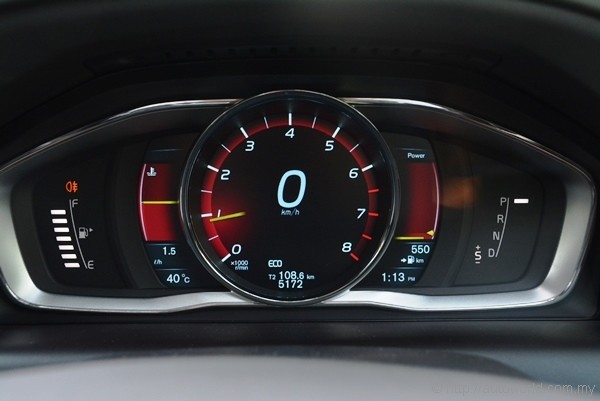 |
| Adaptive digital display is an optional extra. Perhaps the only option really worth taking. |
Driving Experience
As mentioned previously, our test car here is fitted with Volvo’s optional 20-inch alloy rims; being a full three inches bigger than the standard 17-inch items from the factory, the impact of these rims on the performance and dynamics of our test car are likely to be considerable.
The most noticeable side effect of these rims is a ride that is at best firm and often teetering to the point of being outright brittle. Effective absorption of bumps and long undulations point to a base suspension set up originally configured for more bearable pliancy, but sharp high-frequency disturbances such as expansion joints and brick-paved surfaces create profoundly unpleasant effects in the cabin.
Higher marks are scored on the handling front where, hilarious torque steer notwithstanding, the XC60 negotiates corners with impressive poise, balance, and composure. It retains the previous model’s electro-hydraulic steering system and is all the better for it – steering response is surprisingly quick and feedback is excellent, at least as far as a 1.7-tonne SUV is concerned.
 |
| B-pillar air-con vents a legacy of Ford’s EUCD platform that continues to underpin the XC60. |
Compared to the previous Ford-powered XC60, the new Drive-E version, despite higher outputs, offers progress in a more linear and measured fashion. Response to part throttle applications is less manic than the now-displaced EcoBoost engines. This suggests a throttle mapping that gives added focus to fuel economy and refinement. Having said that, effects of added rotational inertia of the 20-inch wheels cannot be discounted.
There is much to like with the new Drive-E engine; it emits a pleasingly deep-sounding note on hard throttle, making it thoroughly enjoyable to rev. Its strong reserves of mid-range torque, meanwhile, jives well with the wide-spread ratios of its 8-speed gearbox for refined and effortless sustenance of high speeds.
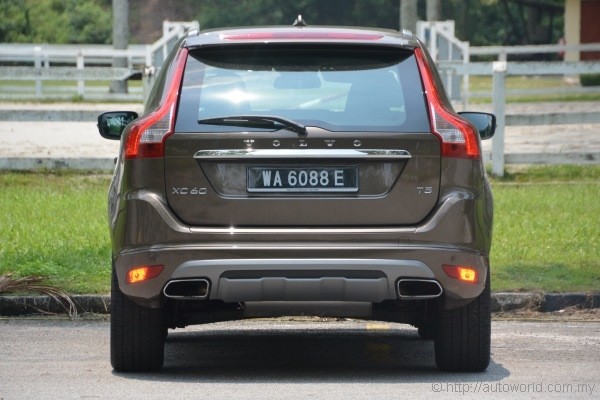 |
Verdict
Smartly-styled and safe as ever, the Volvo XC60 continues to be a blue chip product within its segment. The revised look of its fascia lends the vehicle a more matured appearance, although it regrettably takes a considerable amount of costly options to give it a thoroughly desirable appearance. All being said, we still strongly recommend giving the 20-inch rollers a miss.
The new engine, meanwhile, is nothing short of a remarkable effort from Volvo. As a player of small volumes, Volvo is limited in both resources and economies of scale; its decision to use one displacement to serve wide-ranging needs is a smart way to maximise variety whilst still achieving competitive economies of scale. As an engineer, I can’t help but marvel at the elegance of this solution. Now still in its infancy, the Drive-E engine still has a long way to go, and from what we’re seeing in the XC60, its prospects are promising.
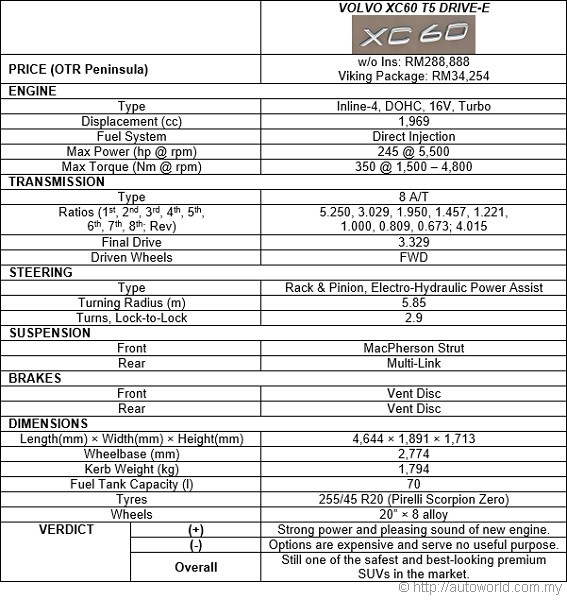 |




